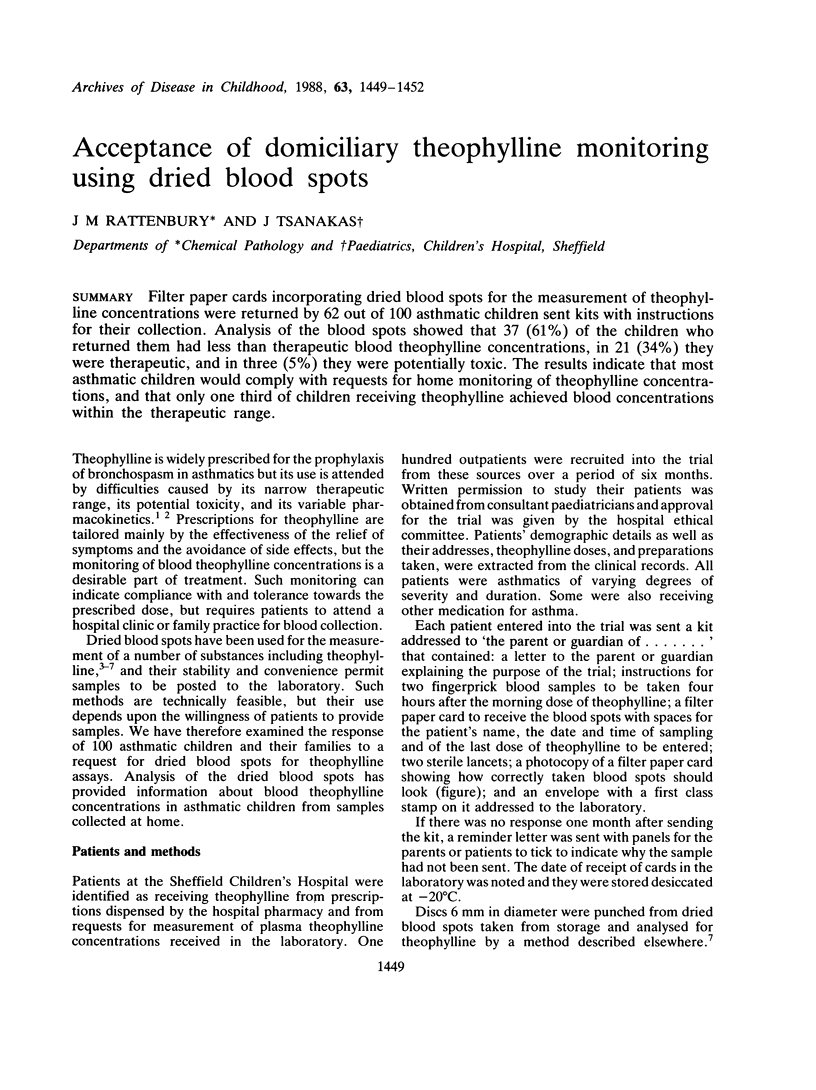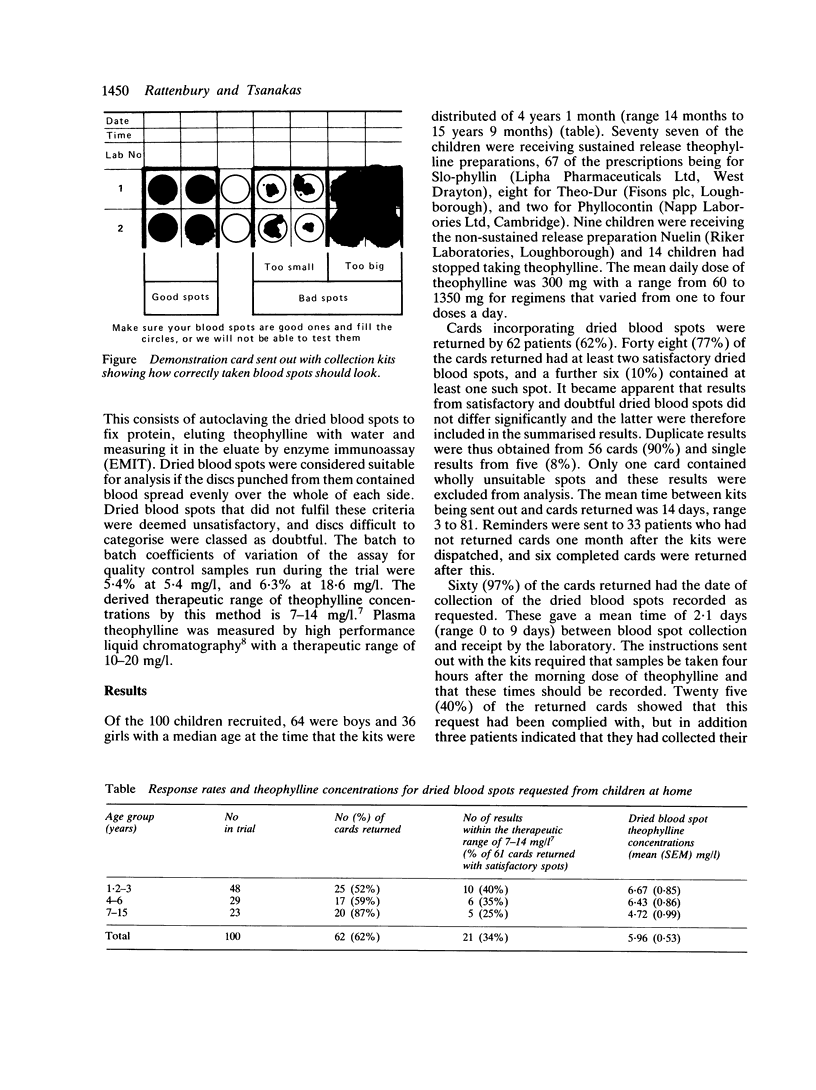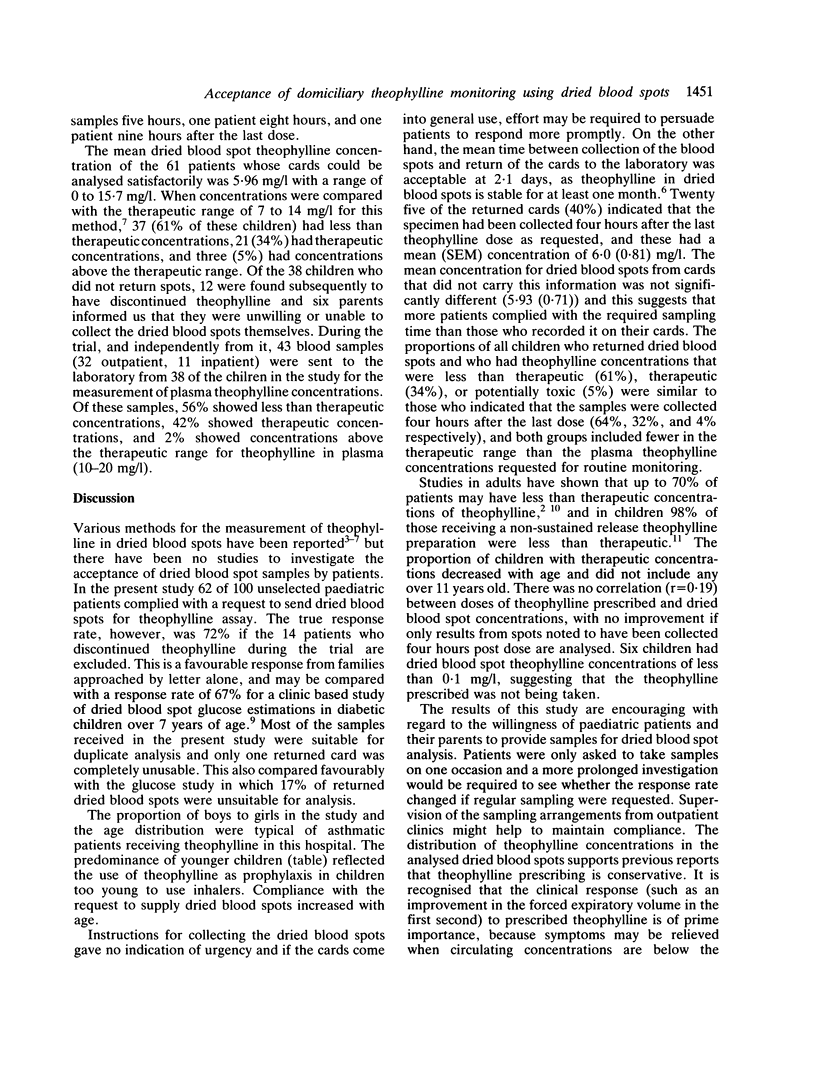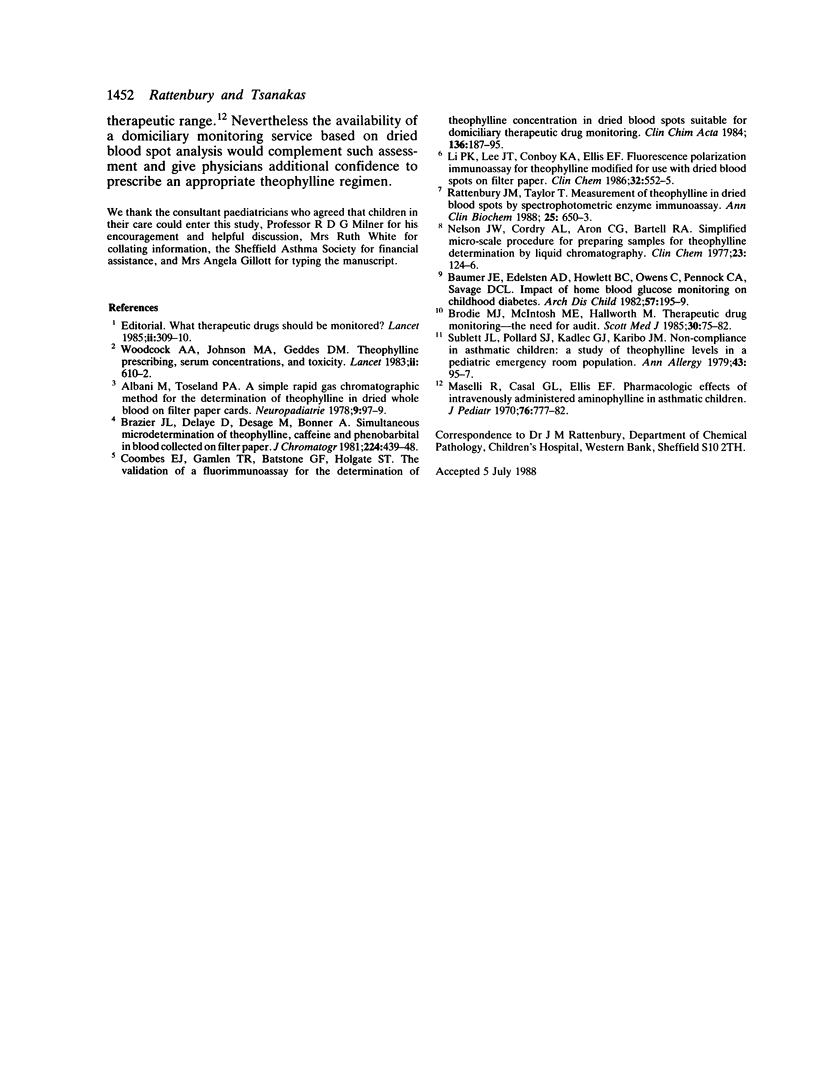Abstract
Filter paper cards incorporating dried blood spots for the measurement of theophylline concentrations were returned by 62 out of 100 asthmatic children sent kits with instructions for their collection. Analysis of the blood spots showed that 37 (61%) of the children who returned them had less than therapeutic blood theophylline concentrations, in 21 (34%) they were therapeutic, and in three (5%) they were potentially toxic. The results indicate that most asthmatic children would comply with requests for home monitoring of theophylline concentrations, and that only one third of children receiving theophylline achieved blood concentrations and that only one third of children receiving theophylline achieved blood concentrations within the therapeutic range.
Full text
PDF



Selected References
These references are in PubMed. This may not be the complete list of references from this article.
- Albani M., Toseland P. A. A simple rapid gaschromatographic method for the determination of theophylline in dried whole blood on filter paper cards. Neuropadiatrie. 1978 Feb;9(1):97–99. doi: 10.1055/s-0028-1085413. [DOI] [PubMed] [Google Scholar]
- Baumer J. H., Edelsten A. D., Howlett B. C., Owens C., Pennock C. A., Savage D. C. Impact of home blood glucose monitoring on childhood diabetes. Arch Dis Child. 1982 Mar;57(3):195–199. doi: 10.1136/adc.57.3.195. [DOI] [PMC free article] [PubMed] [Google Scholar]
- Brodie M. J., McIntosh M. E., Hallworth M. Therapeutic drug monitoring--the need for audit? Scott Med J. 1985 Apr;30(2):75–82. doi: 10.1177/003693308503000202. [DOI] [PubMed] [Google Scholar]
- Coombes E. J., Gamlen T. R., Batstone G. F., Holgate S. T. The validation of a fluoroimmunoassay for the determination of theophylline concentration in dried blood spots suitable for domiciliary therapeutic drug monitoring. Clin Chim Acta. 1984 Jan 31;136(2-3):187–195. doi: 10.1016/0009-8981(84)90291-2. [DOI] [PubMed] [Google Scholar]
- Li P. K., Lee J. T., Conboy K. A., Ellis E. F. Fluorescence polarization immunoassay for theophylline modified for use with dried blood spots on filter paper. Clin Chem. 1986 Mar;32(3):552–555. [PubMed] [Google Scholar]
- Maselli R., Casal G. L., Ellis E. F. Pharmacologic effects of intravenously administered aminophylline in asthmatic children. J Pediatr. 1970 May;76(5):777–782. doi: 10.1016/s0022-3476(70)80305-5. [DOI] [PubMed] [Google Scholar]
- Nelson J. W., Cordry A. L., Aron C. G., Bartell R. A. Simplified micro-scale procedure for preparing samples for theophylline determination by liquid chromatography. Clin Chem. 1977 Jan;23(1):124–126. [PubMed] [Google Scholar]
- Rattenbury J. M., Taylor T. Measurement of theophylline in dried blood spots by spectrophotometric enzyme immunoassay. Ann Clin Biochem. 1988 Nov;25(Pt 6):650–653. doi: 10.1177/000456328802500609. [DOI] [PubMed] [Google Scholar]
- Sublett J. L., Pollard S. J., Kadlec G. J., Karibo J. M. Non-compliance in asthmatic children: a study of theophylline levels in a pediatric emergency room population. Ann Allergy. 1979 Aug;43(2):95–97. [PubMed] [Google Scholar]
- Woodcock A. A., Johnson M. A., Geddes D. M. Theophylline prescribing, serum concentrations, and toxicity. Lancet. 1983 Sep 10;2(8350):610–613. doi: 10.1016/s0140-6736(83)90691-8. [DOI] [PubMed] [Google Scholar]


